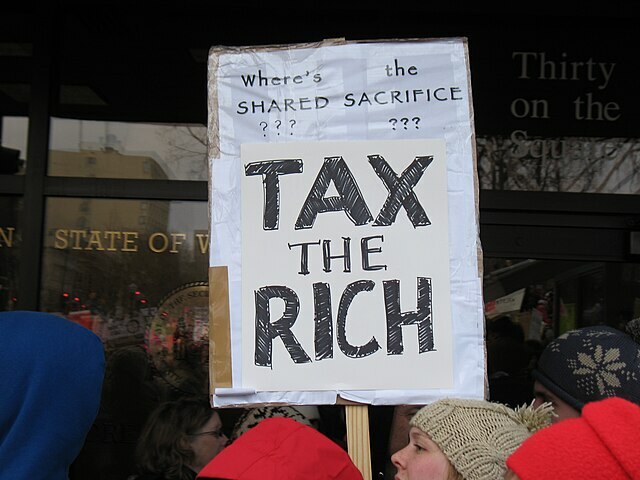Most conservative and libertarian groups opposed ObamaCare repeal efforts because they did not go far enough to dismantle state intervention in health care. Rand Paul took the same line. John McCain opposed repeal because he’s John McCain. This opposition left us with an unaffordable status quo. Twice.
With such disappointing recent history, it can be hard to dislike even a small improvement to the tax code, particularly since the congressional tax plan looks very much like an option the Tax Foundation forecast could increase GDP 7.1 percent and wages 5.3 percent in the long run.
The Tax Foundation plan would be revenue neutral and leave every group below the top 1 percent with between one-tenth of one percent and half a percent more after-tax income. Income for the top 1 percent would be eight-tenths of a percent lower. Because there are slight differences between the plans, it may not work out exactly the same in Congress, but should not be far off.
Congress’ outline promises tax relief for middle-class families and small businesses, simplified filing on a “postcard” (quotes in the original), fewer tax breaks, and more incentive for companies to bring or keep headquarters, work sites, and profits in the U.S. The initial framework did not spell out how all of this would happen, and it has to get through committees, so anything said today could change.
First, it reduces the number of tax brackets from seven ranging between 10 percent and 39.6 percent, to three brackets of 12, 25, and 35 percent. Because most people use the tax table, the change in tax rates will not be as noticeable on its own.
What people would notice is an increase in the standard deduction, elimination of personal exemptions and most itemized deductions, and a larger child tax credit. The standard deduction would increase from $12,600 to $24,000 for married filing jointly returns (half those numbers for single filers). This sounds great, except families with two or more children would have received $12,150 in exemptions, which more than offsets the standard deduction increase. Those who currently itemize their deductions would generally receive even less benefit.
Fewer people would see an advantage in itemizing their deductions, both because of the larger standard deduction, or “zero tax bracket,” and because only the mortgage interest deduction and charitable tax deduction would remain. Taxpayers would no longer be able to deduct state and local income or sales tax paid from their federal taxes. There is a debate on the appropriateness and constitutionality of taxing income that has already been taxed, but the deduction provides a subsidy to high-tax jurisdictions by reducing the actual burden of their taxes. Most economists favor ending the mortgage interest deduction, which mainly benefits high-income earners with expensive homes, but it remains for now. It would seem hard to justify its retention if interest on student loans loses its tax deductibility.
Tax benefits for higher education, retirement savings, and working also remain. There is no mention of the earned income tax credit (EITC), which stays in the Tax Foundation plan. There is also no mention of Health Savings Accounts, about the only thing that has proven able to control health spending.
It would also eliminate the death tax and the alternative minimum tax (AMT) for individuals and businesses.
Most businesses would be taxed at a 25 percent rate, and the drafters will look to committees to determine ways to keep people in the highest tax bracket from treating their personal income as business income. The corporate income tax rate would dip to 20 percent, but this would leave the combined tax rate for corporations at 24.1 percent, above the industrialized country average of 22.5 percent.
Multinational corporations would be able to repatriate international earnings as tax-exempt dividends. All businesses would be able to expense capital investments, other than structures, immediately. In exchange, the plan would end or shrink tax credits and deductions for everything except research and development expenses and low-income housing. Interest expense deductions would also be restricted. The Tax Foundation plan would allow deductibility only against interest income.
Compared to the current tax code, the proposed plan would make taxes simpler with no harm done to most families, unless they had a lot of itemized deductions and somehow avoided the AMT. There is room to make improvements, like reducing the corporate tax rate further and ending the mortgage interest deduction, but the improvements outlined so far are worth making if they can be implemented.


